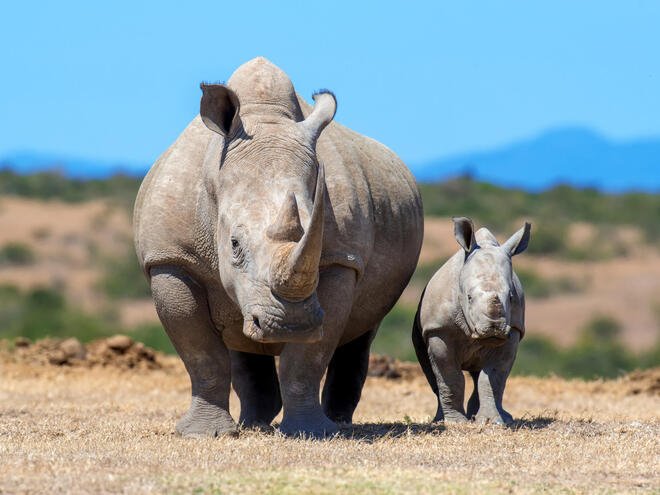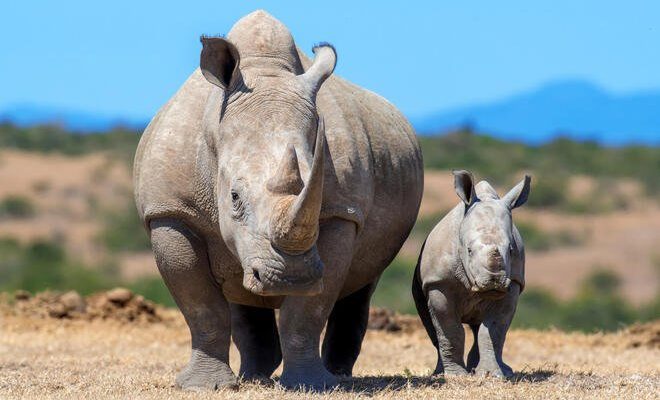
The white rhinoceros has two subspecies: the Southern white rhino, which is more numerous, and the critically endangered Northern white rhino. Sadly, the Northern white rhino is teetering on the brink of extinction, with only two known individuals remaining. Because of their unique position in the ecosystem, understanding their role helps us appreciate why conservation efforts are so vital.
What is a Keystone Species?
You might be wondering what a keystone species is. Well, think of it like the foundation of a house. If you take it away, the entire structure can collapse. In ecosystems, keystone species have a disproportionately large impact on their environment relative to their abundance. White rhinos are a perfect example of this.
These animals help maintain the structure of their habitats. They do this mainly through their grazing habits. As they munch on grasses, they keep the landscape open, allowing sunlight to reach other plants. This promotes biodiversity, meaning a wide variety of species can thrive in the same area. When you think of rhinos, picture them as nature’s lawnmowers, keeping the ecosystem healthy and balanced.
How White Rhinos Affect Plant Life
Now, let’s get into the nitty-gritty of how white rhinos impact the plant life around them. When these large animals graze, they often choose the taller grasses. This behavior keeps the grass short, allowing smaller plants and flowers to flourish.
Imagine a field where grasses grow unchecked. It quickly becomes a jungle where only the strongest survive. But with white rhinos grazing, the variety of plants increases, leading to a more vibrant ecosystem. This not only benefits other animals that rely on different plants for survival but also stabilizes the soil and prevents erosion.
Additionally, white rhinos often create wallows—mud pits they roll in to cool off and protect their skin. These wallows can fill with water and become temporary habitats for frogs, insects, and other small creatures. This means that the rhinos’ need for comfort is indirectly creating opportunities for countless other species.
Impact on Other Animal Species
The effects of white rhinos stretch beyond just plants. By creating open areas in their habitat, they also benefit a wide range of animal species. Birds, for example, often thrive in environments shaped by rhinos. They can feed on insects that are stirred up by the rhinos as they graze.
Moreover, other herbivores, like zebras and antelope, benefit from the same open grasslands. They can easily spot predators thanks to the clear sightlines that white rhinos help establish. If you think about it, it’s a win-win situation: the rhinos get their meals, and other animals reap the benefits of a well-maintained landscape.
Role in Soil Fertility
Soil health is another significant area where white rhinos make their mark. Their feeding habits enrich the soil with nutrients. When rhinos graze, they also leave behind dung, which is rich in fertilizer. This dung helps enrich the soil, promoting plant growth.
Furthermore, other animals, like insects, are attracted to rhino dung. These critters break it down and help distribute nutrients throughout the ecosystem. You could say that the white rhino is nature’s gardener, helping cultivate healthy soils that support diverse plant and animal life.
The Threat of Extinction
Despite their importance, white rhinos face serious threats. Poaching, driven by demand for their horns, poses a critical risk. It’s hard to imagine that something as magnificent as a rhino could be hunted for its horn, but that’s a harsh reality.
Habitat loss is another significant factor contributing to their decline. As human populations grow and expand, natural habitats are destroyed. This not only threatens the rhinos but also the balance of the ecosystems in which they live. Conservation efforts, such as protected areas and anti-poaching initiatives, are essential to secure their future.
Conservation Efforts and Their Importance
Conservation initiatives are crucial for the survival of white rhinos and the ecosystems they support. Organizations are working tirelessly to create protected habitats where rhinos can roam freely and safely. These projects often involve local communities, teaching them the value of wildlife and how they can coexist harmoniously.
Additionally, breeding programs aim to increase the Southern white rhino population, giving a fighting chance to this incredible species. By focusing on both the rhinos and their habitats, we can help ensure that the delicate balance of the ecosystem remains intact. The survival of the white rhinoceros is not just about saving one species; it’s about preserving the interconnected web of life.
Why This Matters to Us
You might be thinking, “Why should I care about white rhinos?” Here’s the thing: every species plays a role in its ecosystem, and the loss of one can have ripple effects that impact many others, including us. Healthy ecosystems provide essential services, from clean air and water to agricultural productivity.
By protecting the white rhinoceros, we’re also safeguarding these benefits for future generations. It’s about maintaining the beauty and diversity of our planet. Supporting conservation efforts for rhinos and their habitats is an investment in the health of our world.
In conclusion, the white rhinoceros is far more than just a big animal; it’s a key player in its ecosystem, influencing plant growth, supporting other species, and enhancing soil health. As we face existential threats like extinction and habitat destruction, it’s vital that we understand the roles these majestic animals play—and take action to protect them for our planet’s future.

